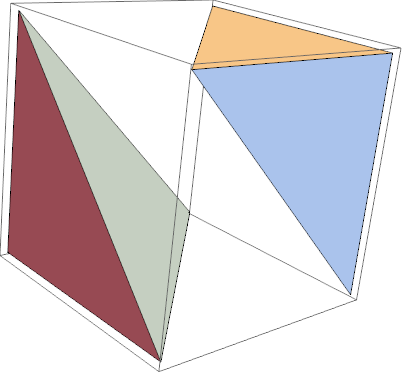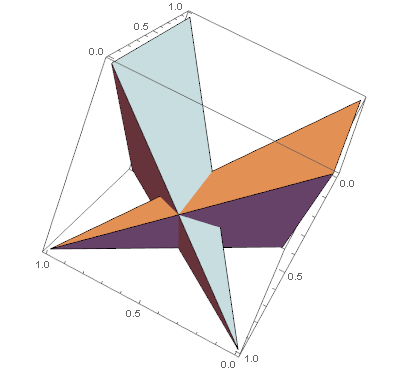Dear Brian Woytovich,
As you clearly realize, your post is not really tied to Wolfram technologies and thus might be deleted (along with my response, of course). I will make a few suggestions so that you can perhaps improve it or formulate a new post that is more in line with forum expectations.
(1) You do not need a 3D printer, or the ability to program one, in order to form 3D graphics in Mathematica. There are primitives for Cuboid (your cube) and Simplex (your tetrahedron. Illustrating two tetrahedra with vertices hitting the eight vertices of a cube is straightforward (in large part because it is a minor modification of an example in documentation for Simplex).
Graphics3D[{Simplex[{{0, 0, 1}, {1, 0, 0}, {1, 0, 1}, {1, 1, 1}}],
Simplex[{{0, 1, 0}, {0, 1, 1}, {1, 1, 0}, {0, 0, 0}}]}]

(2) This might not be the image you had in mind. In which cse you might try to explain it better, maybe offer a corrected picture. Maybe something like below?
Graphics3D[{Simplex[{{0, 0, 1}, {1, 1, 0}, {1, 0, 1}, {0, 0, 0}}],
Simplex[{{0, 1, 0}, {0, 1, 1}, {1, 1, 1}, {1, 0, 0}}]}, Axes -> True]

(3) Categorizing things is quite old of course. Going back at least to Aristotle, one finds categorization of sciences for example. It might be useful to consider how your proposed model departs from other work (finding similarities might also be useful)..
(4) What you propose is not at all clear. There is a very general set of statements, and some very specific three dimensional objects are brought in. But how the latter relate to the former is really unstated.
(5) Mathematica/Wolfram Language provides many capabilities for representation of networks, relationships, and analysis thereof. It would be useful at least for purposes of posting to this forum, to have some idea of how these might be brought to bear on your project. This is something you would need to consider, preferably with some code shown. This would give people a concrete idea not only of what you are trying to do. It would also to meet the basic forum standards in terms of what constitutes a viable question regarding Wolfram technologies.
I hope some of these suggestions are of use for your work.